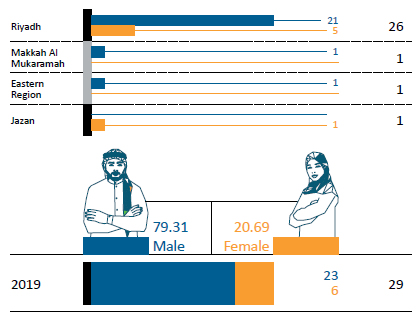Engagement and impact
Providing support for recruitment and training for Saudization of the private sector
Employment and training support channels
HRDF uses multiple channels to target employers and researchers to support the recruitment and training services to increase the Saudi workforce.
Taqat National Labour Gateway
Taqat is an integrated platform that translates human resource development policies and visions of The Kingdom to support the national economy with a qualified workforce.
It aims to create a high-quality digital job market to develop the competitiveness of the Saudi workforce, to empower job seekers, and to increase Saudization. The most important benefits of Taqat are:
- Provide a unified and integrated platform for all parties in the labour market
- Enhance labour market transparency and provide data to support decision-making
- Provide tools to manage the labour market and activate its programmes and policies
- Reduce dependency on expatriates
- Enhance Saudi workforce competitiveness
- Support human resource development according to actual labour market needs
- Provide employment services
- Provide training services
National Labour Gateway structure of systems

Matching system
(Between job seekers and vacancies)

SMS and email gateway

Mobile application

Unified wages system

Electronic platform

Customer services management system


Database

E-training system

Eligibility system

Payment systems
National Labour Gateway structure
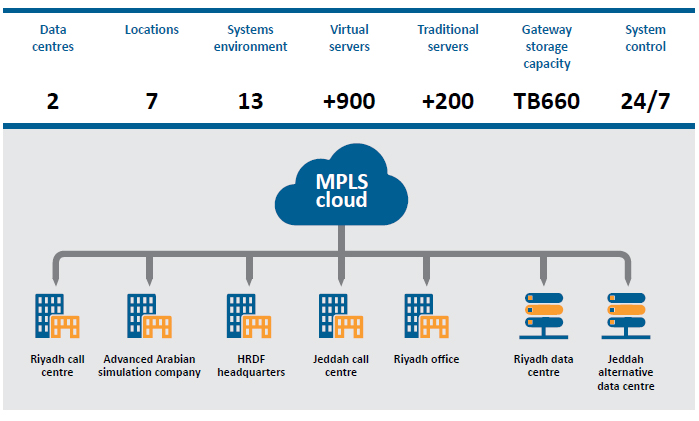
National Labour Gateway services and platforms
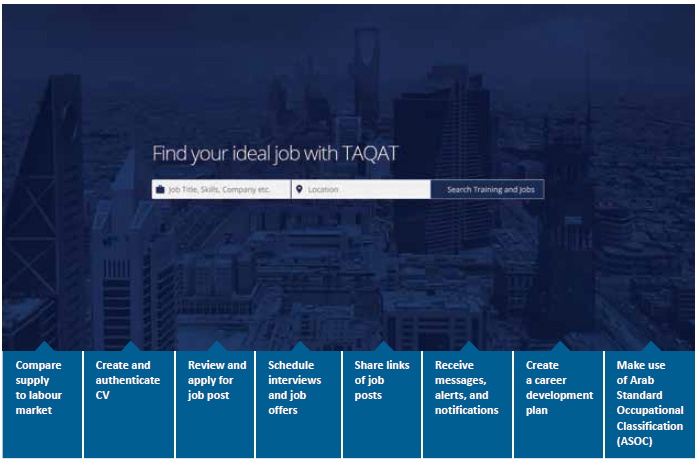
Recruitment platforms
Individuals service |
Employer services |
Service providers services |
||
|
|
|
Training platform |
Programmes platform |
|||
|
|
|
||
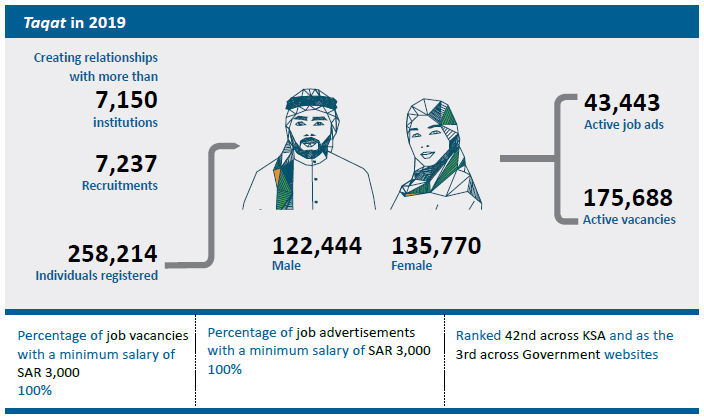
HRDF’s touchpoints
HRDF’s touchpoints provide services to job seekers in all regions through mobile branches, employment centres, and employment offices located in the Kingdom.
Branches
HRDF’s branches are the primary point-of-contact of the Fund. In 2019, there were 22 HRDF branches in KSA.They are responsible for providing HRDF’s services and creating job opportunities in coordination with the private sector. They align job seekers with appropriate job opportunities, and provide professional guidance where necessary. Further, they organize workshops, job meetings, and provide career and HR counselling. In 2019, 52,918 were recruited through HRDF branches.
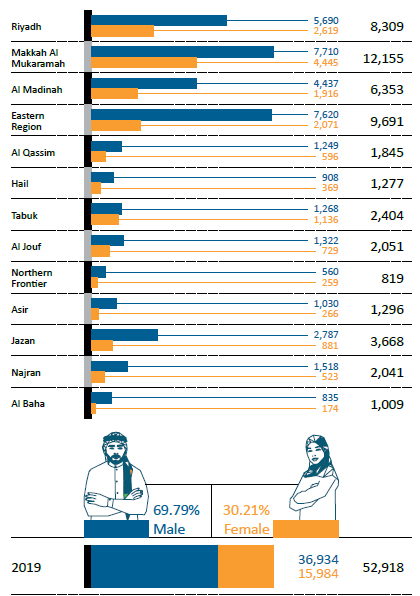
Mobile branches
HRDF’s mobile branches are deployed across the Kingdom to provide services such as:
- Introducing customers to HRDF’s programmes and services
- Respond to customer inquiries about employment and training support
- Addressing customer grievances and resolving issues
- Offering career opportunities for job seekers
- Covering regions that do not have fixed branches
- Conducting field visits to existing entrepreneurs
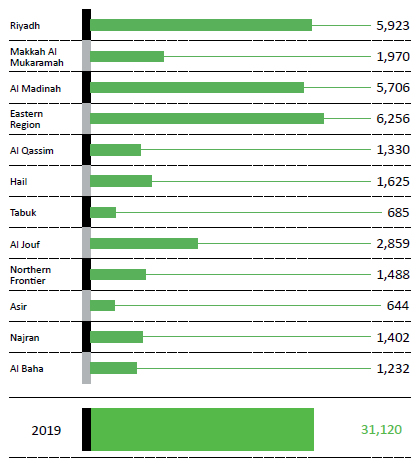
Job placement centres
These centres aim at promoting productive and continued employment by developing inclusive training and employment strategies for male, female, and people with disabilities. They enable employers to respond to labour market changes and implement policies which leave a positive impact on economic growth and investment. The total number of job placement centres reached 47, of which 24 are for males, 16 for females, and 7 are remote centres.
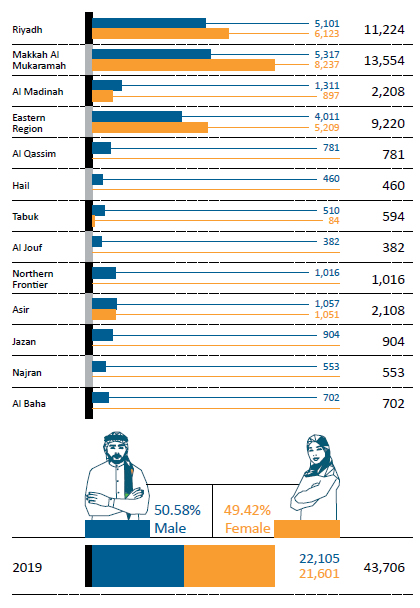
Tele-job placement centres
These centres aim to promote productive and continuous employment by developing employees and job seekers according to the latest standards followed. These centres also provide post-employment services that help in job stability and development. There are 7 tele-job placement centres distributed in the regions of the Kingdom.
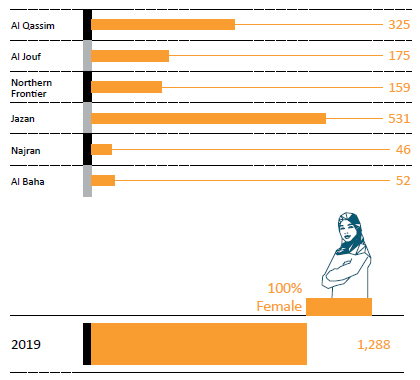
University recruitment centres
These offices aim to establish strategic partnerships between HRDF and universities to achieve the common goal of employing university graduates and students.
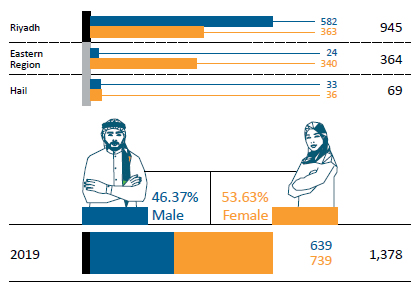
Private employment offices
These offices offer access to the largest number of private establishments and job seekers. The number of employment offices has reached 16 in Riyadh region.
Liqaat Employment fairs (Riyadh, Jeddah, Dammam, Jizan)
These fairs bring together researchers, job seekers and caretakers of private sector, students (secondary level and above), employees and employers of the private sector, entrepreneurs and women entrepreneurs, and persons with disabilities employed in the private sector to encourage, and facilitate participants. The fairs also include reviewing of vacancies and job placement at no charge.
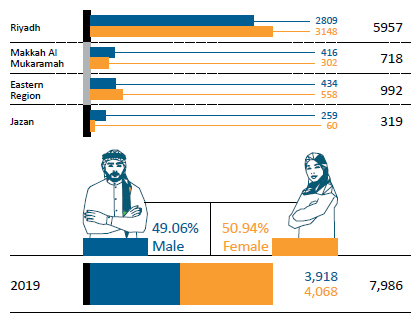
Electronic recruitment fairs
The electronic job fairs brings together job seekers, business owners on one virtual platform. They can communicate through a various number of tools including email. In 2019, participating establishments reached 42 with 29 beneficiaries.
